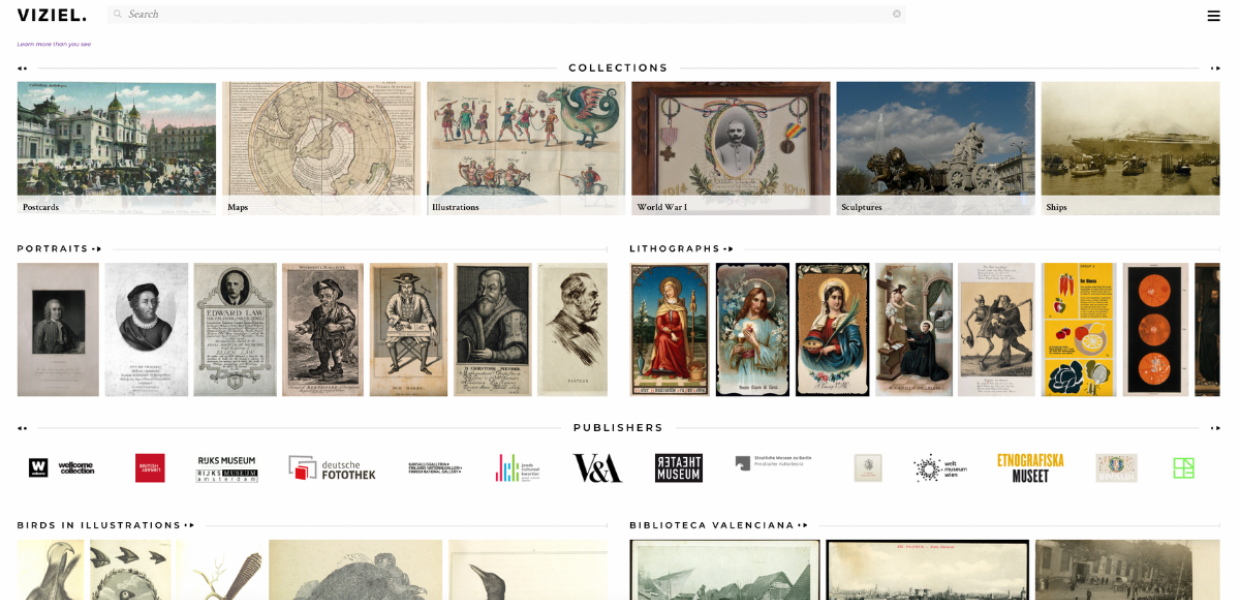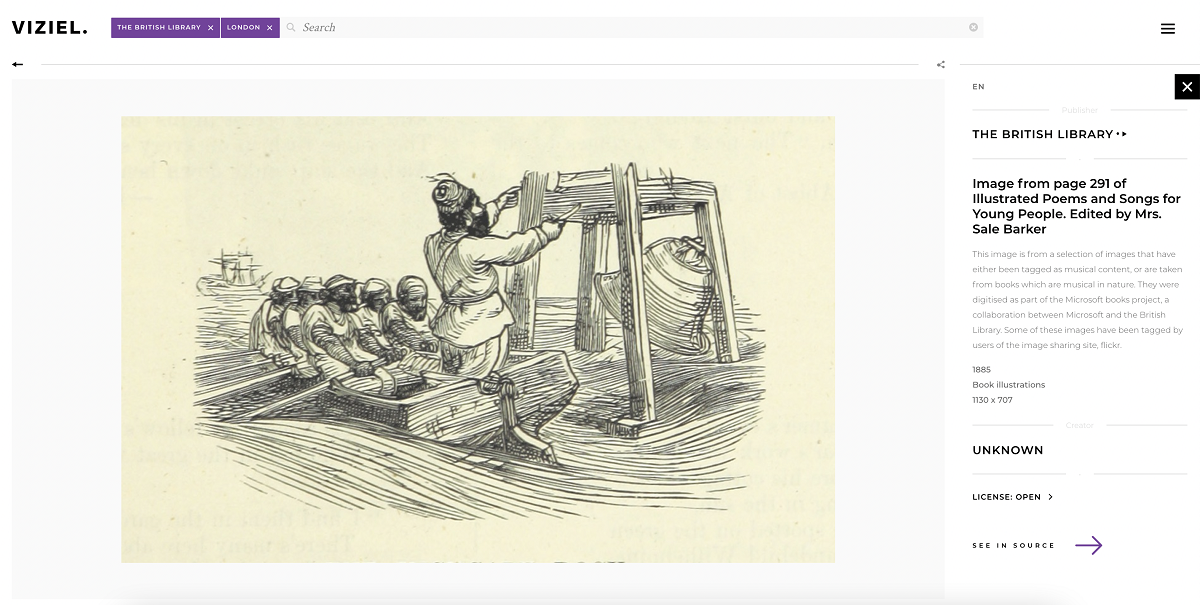In a few sentences, can you describe what Viziel is?
Viziel is a visual information platform, where an image is a unique data point. Every image is accompanied by a few metadata fields and a reference to the source website of the data provider for further details.
Where did the idea for Viziel come from, and how did you start working towards making it a reality?
I have always been drawn to visual arts, not just from the aesthetic perspective but also because it is a rich and informative medium, with numerous visual details, artistic styles and attached stories and narratives. As a person from the tech industry, it was quite frustrating to realise that now that so much content is within easy reach, the visual arts are often still not considered to be an important enough source of information. Books, music, and film all have a myriad of platforms for discovery and consumption, but the visual arts are still often excluded. This creates a huge gap in knowledge and in the current paradigm of information accessibility.
This is how the idea of Viziel was born. With the research I’ve done, I’ve realised that the solution should not be limited to visual arts but to comprise all visual content with informational value. For instance, you could explore a visual story of calligraphy through time periods, countries, styles, techniques, with every image leading to detailed knowledge from reliable resources. I wanted to include as many relevant options for users to engage with this heritage as well: buying a book, visiting an exhibition, joining an online course.
At the beginning of 2021 I bootstrapped this idea into a prototype, showcasing how the subject of European cultural heritage can be explored via image thanks to Europeana’s API.
Why did you choose Europeana as a source of data? Are you looking to integrate more cultural heritage data sources in the future?
Having no background in this area, as part of my research, I attended a few events on the topic of cultural heritage digitisation in the past years, where I first heard about Europeana. Naturally, dealing with a single source that aggregates data from numerous institutions was an optimal choice. Another reason was that Europeana employs cross-disciplinary teams of professionals who were very supportive from the beginning to the launch of the project.
Regarding other cultural heritage resources, as I’ve mentioned, the idea is to present all types of content, so definitely yes. Having more data on a platform enables reaching wider audiences and obtaining comprehensive knowledge on specific topics.



